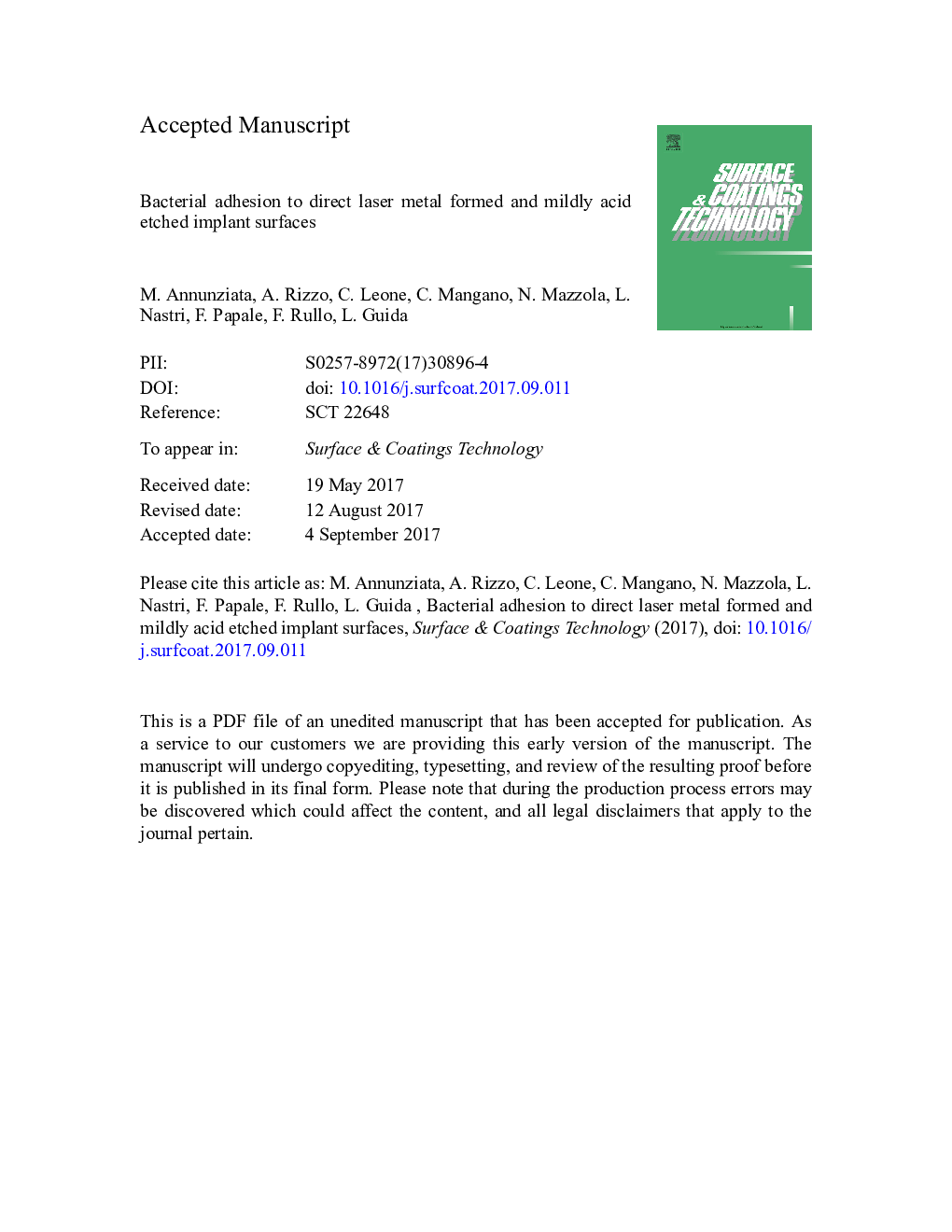| Article ID | Journal | Published Year | Pages | File Type |
|---|---|---|---|---|
| 5464483 | Surface and Coatings Technology | 2017 | 28 Pages |
Abstract
Direct laser metal forming (DLMF) and mildly acid-etching (MA) are currently used to produce roughened titanium implant surfaces with the aim to promote osseointegration. However, their effect on bacterial colonization and peri-implant disease occurrence has been poorly investigated. Aim of the work is to study the influence of DLMF and MA surfaces characteristics on bacterial adhesion in vitro and biofilm formation in situ compared to turned (T) control surfaces. T, MA and DLMF grade 5 titanium, in form of 6 Ã 1 mm disks, were characterized by scanning electronic microscopy and 3D-profilometry. Average roughness (Sa), density of tops (Sds) and developed surface (Sdr) were measured. Cultures of Streptococcus sanguinis were seeded on disks for 2 and 6 h, adherent bacteria were quantified by counting of colony forming units (CFU). Samples were exposed to the oral environment for 12 h; then, the biofilm was disrupted and bacteria were quantified. Intergroup differences were analyzed by Kruskal-Wallis rank analysis of variance α = 0.05. Significantly (p < 0.005 at least) different roughness values were found for DLMF vs MA, DLMF vs T and, to a less extent, MA vs T surfaces. Significantly (p < 0.01 at least) higher CFU counts were found for DLMF vs MA, DLMF vs T, and, to a less extent, for MA vs T surfaces, both in vitro and, even more, in situ. Bacterial adhesion to implant surfaces is significantly correlated to the measured roughness parameters. MA and DLMF are more prone to bacterial colonization than T surfaces.
Related Topics
Physical Sciences and Engineering
Materials Science
Nanotechnology
Authors
M. Annunziata, A. Rizzo, C. Leone, C. Mangano, N. Mazzola, L. Nastri, F. Papale, F. Rullo, L. Guida,
